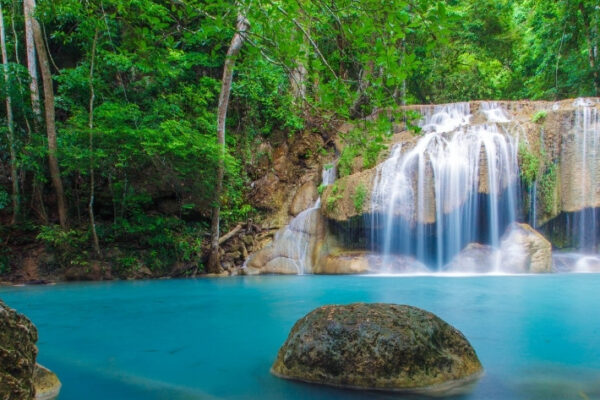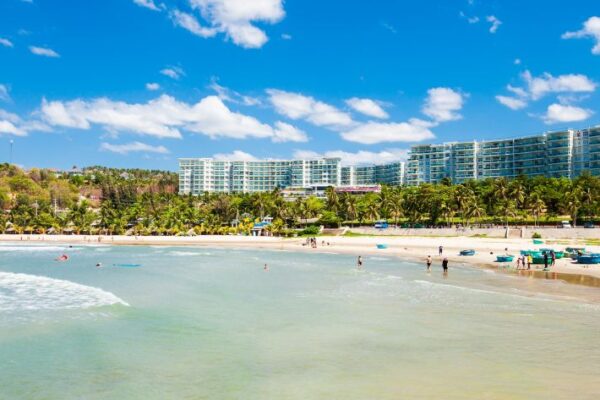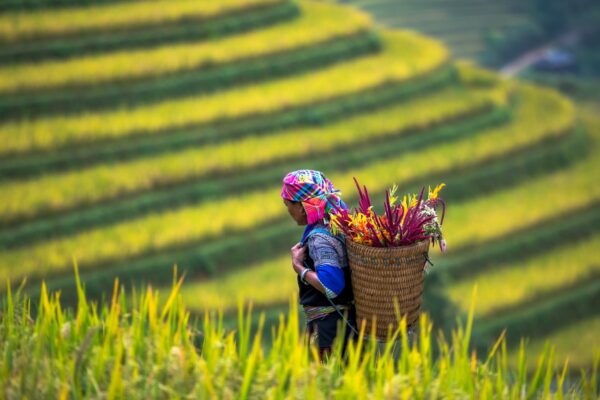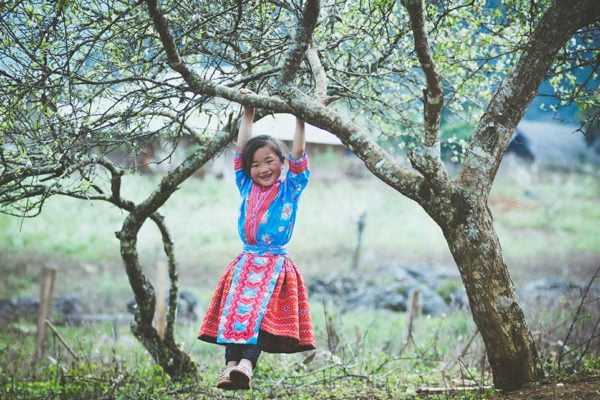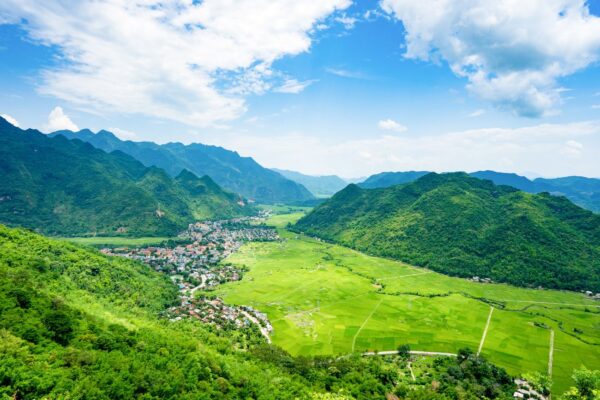Top Places to Visit in Northern Vietnam: Discover Culture, Scenic Wonders & Hidden Gems
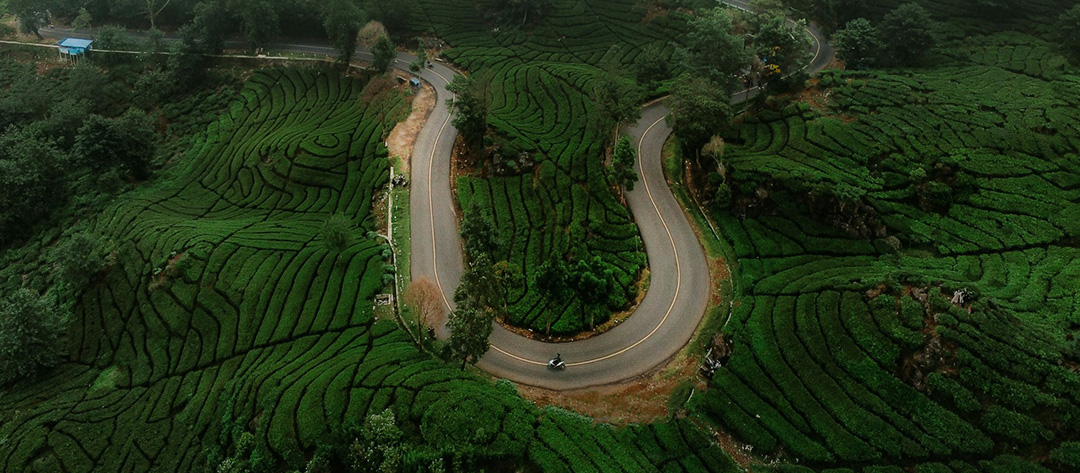
Northern Vietnam is more than a region, but a place where limestone cliffs rise straight from emerald waters, mountain passes seem pulled from postcards, and small markets burst with color, scent, and song. For first-time visitors, it offers some of Vietnam’s most iconic sights. For seasoned travelers, it hides remote gems that still feel untouched by mass tourism.
This guide will walk you through the places to visit in northern Vietnam that matter most—whether you’re after iconic UNESCO wonders, scenic road adventures, village encounters, or serene retreats. With practical tips for timing, transport, and local customs, you’ll be able to see both the highlights and the hidden corners with confidence.
Best Places to Visit in Northern Vietnam for First-Time Visitors
Halong Bay
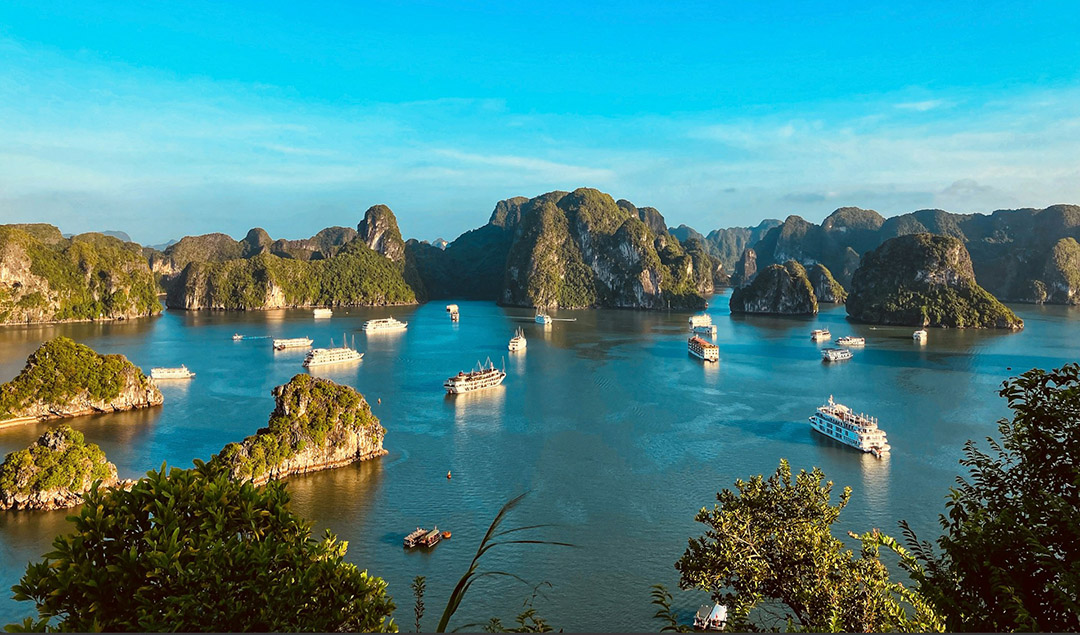
Located in northeastern Vietnam, within Quang Ninh Province, Halong Bay is about 165 kilometers east of Hanoi and borders the Gulf of Tonkin. Famous for its emerald waters and nearly 2,000 limestone islands rising majestically from the sea, this place is a UNESCO World Heritage Site and a top travel destination. The bay’s spectacular karst formations and numerous caves create an enchanting natural landscape, with Halong City serving as the main gateway for visitors.
How to get there
To reach Halong Bay from Hanoi, travelers can choose between shuttle buses, private cars, or limousines, with a travel time of approximately 2.5 to 3.5 hours via the Hanoi–Hai Phong Expressway.
Shuttle bus services depart daily from major hotels and the Old Quarter, while private cars offer a direct and faster option.
Buses and limousines provide comfortable seating and frequent departures, making the bay easily accessible from the capital city.
Highlights
Its landscape is otherworldly—over 1,600 limestone islets rise majestically from jade waters, forming caves, lagoons, and sandy coves. Travelers can explore the bay on wooden junks or sleek modern cruisers, weaving between giant cliffs that catch the light at sunrise and sunset. Onboard, expect multi-course seafood feasts, magical decks for stargazing at 22:00, and optional activities like night squid fishing.
Travel Tips:
- If possible, book an overnight cruise; it takes you deeper into secluded parts of the bay and allows you to wake up to sunrise mist at 06:00.
- For a quieter cruise, Lan Ha Bay and Bai Tu Long Bay offer similar beauty with fewer boats.
- Bring motion sickness tablets if you are sensitive—waters are calm, but boat travel can still test light sleepers.
- Prices vary widely (from USD 120 to over USD 400 per person), depending on the inclusions, style, and length of cruise.
Ninh Binh (Trang An, Tam Coc, Hoa Lu, Hang Mua)
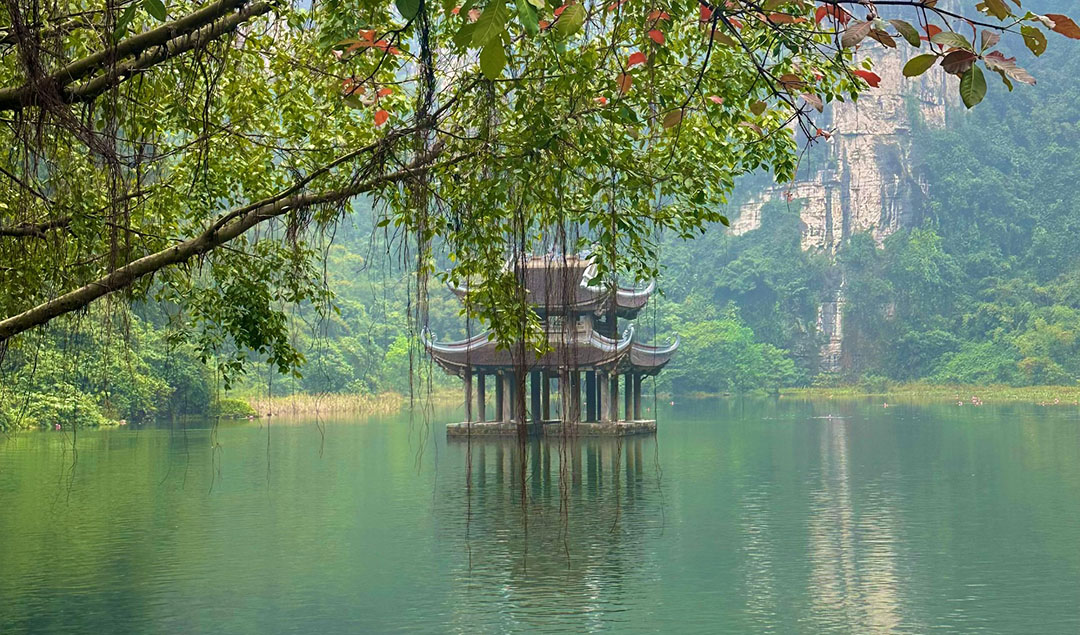
This province is situated in northern Vietnam at the southernmost tip of the Red River Delta, just over 90 kilometers south of Hanoi. Surrounded by rivers, mountains, and lush countryside, Ninh Binh is famed for dramatic karst landscapes, ancient temples, and nature reserves like Trang An, Tam Coc, Hoa Lu, and Hang Mua. Its geography marks the gateway between North and Central Vietnam, offering a rich blend of historical sites and captivating scenery.
How to get there:
Travelers can easily reach Ninh Bình from Hanoi, with trains and buses making the journey in about two hours. The Reunification Express Train and several bus companies depart regularly, while private cars and taxis offer a direct and flexible route via major highways. Thanks to efficient transportation, both short visits and extended explorations are accessible from the capital.
Highlights
Dubbed “Halong Bay on land,” Ninh Binh combines karst cliffs and lush rice paddies with history and spirituality.
Trang An, a UNESCO site, offers serene boat journeys under limestone caves where the roof sometimes dips so low you must duck.
Tam Coc is equally stunning, its riverside route framed by fields of rice that change color with the seasons.
For culture, Hoa Lu introduces visitors to what was once Vietnam’s first capital in the 10th century. For thrill-seekers, Hang Mua’s 500 steps deliver a panoramic view of patchwork paddies below.
>> Read More: The Ultimate Guide For Ninh Binh Tour – From Tam Coc Boat Rides to Mua Cave Summits
Travel Tips
- Rent a bicycle or motorbike to explore at your own pace between caves, temples, and farms.
- Stay overnight rather than commuting from Hanoi—early mornings and late afternoons in Ninh Binh are its most peaceful times.
- October–April is drier with clearer views; May and September reward with golden rice fields during harvest.
- Entry fees are modest, usually under USD 5 for temples and viewpoints.
Sapa
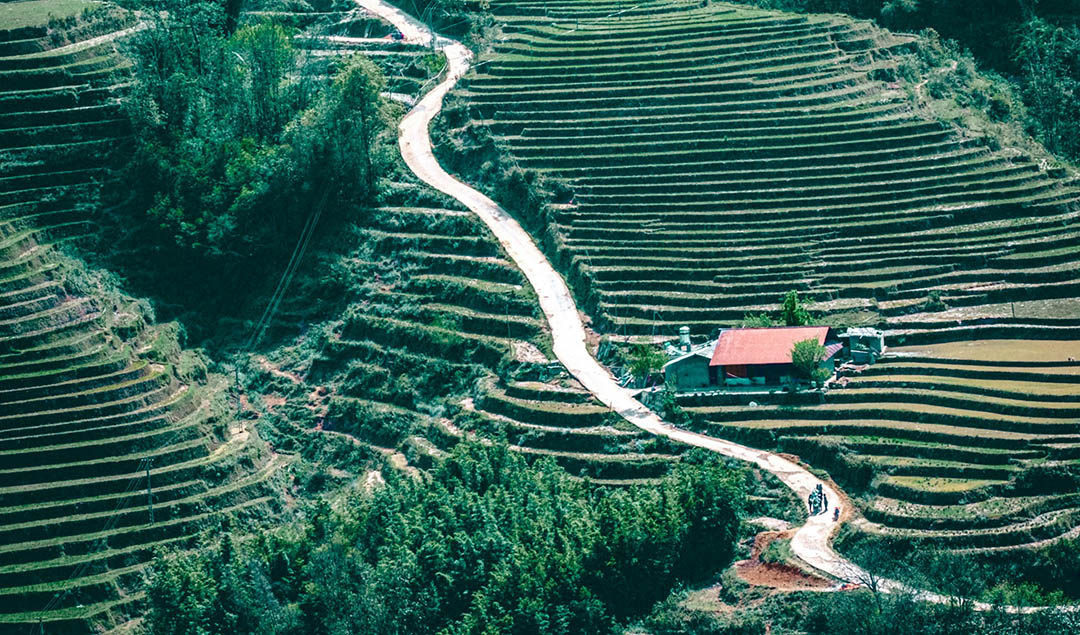
This picturesque mountain town is located in Lao Cai Province in northwest Vietnam, approximately 350 kilometers northwest of Hanoi, near the Chinese border.
Nestled in the Hoang Lien Son mountain range, Sapa is famous for its cool climate, stunning emerald rice terraces, lush forests, and the towering Fansipan Peak—the highest mountain in Vietnam at 3,143 meters above sea level. This highland area is home to diverse ethnic minority communities, offering rich cultural experiences amid breathtaking scenery.
How to get there
To get to Sapa, most travelers take an overnight train or bus from Hanoi to Lao Cai, which takes about 8 hours, followed by a short 30- to 45-minute drive by car or taxi to Sapa town. Alternatively, direct sleeper buses and private cars from Hanoi offer 5–6 hour journeys through mountainous roads.
Highlights
Perched at 1,500m above sea level, Sapa is a fusion of natural beauty and cultural variety. Terraced rice paddies cascade down valleys, while peaks loom under blankets of mist. Ethnic minorities—the Hmong, Dao, Tay, and Giay—add vibrancy with marketplaces, hand-sewn clothing, and customs unchanged for generations.
The crown jewel is nearby Fansipan, Vietnam’s highest mountain. Those who don’t fancy trekking can ascend via a 15-minute cable car ride, experiencing breathtaking views if the weather is clear. In the villages, immersive homestays let visitors try herbal baths, hand-grind corn into wine, or hike to waterfalls used daily by locals.
>> Read More: Best Sapa Trekking Routes That Will Show You The Charm of This Land
Travel Tips
- Sapa is best visited September–November when the terraces are golden and the air crisp. April–May is also good for blossoms.
- Avoid expecting blue skies every day; mist is part of Sapa’s mystery.
- Carry cash; ATMs are sparse outside town. Trekking guides cost around USD 20–30 per day for small groups.
- Choose homestays in valleys like Ta Van or Lao Chai rather than only hotels in Sapa town—it enhances authenticity.
>> Read More: Accommodation in Sapa – Guide for Selection & Our Picks for Stays
Adventure & Scenic Routes: Wild Places to Visit in Northern Vietnam
Ha Giang & Dong Van Plateau
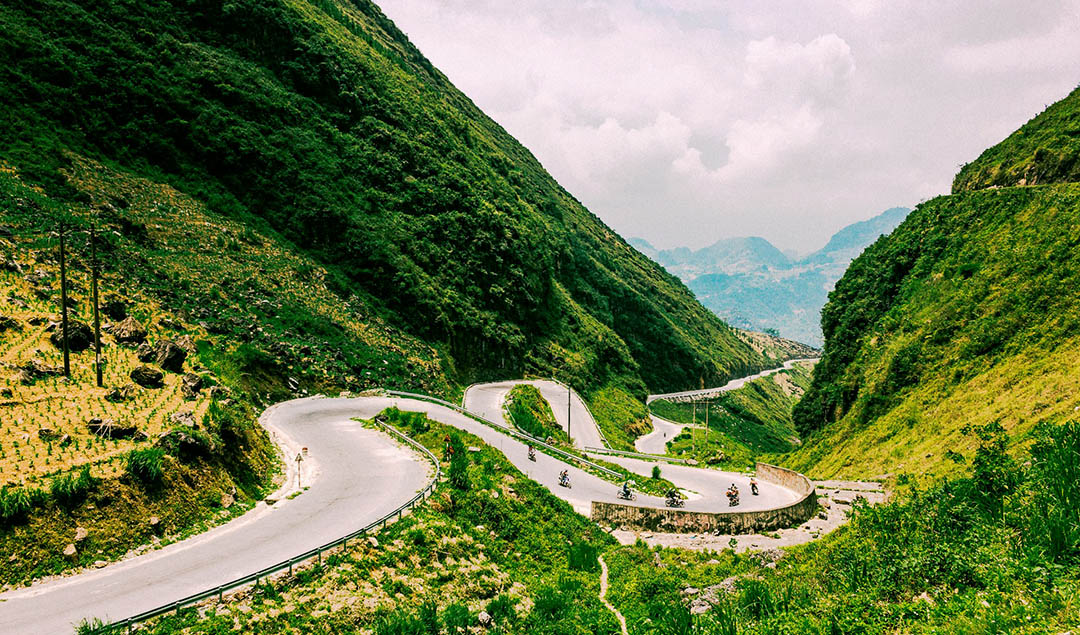
Ha Giang, now part of Tuyen Quang Province, is located in the far northern tip of Vietnam, bordering China’s Yunnan province, and is renowned for its rugged mountainous landscapes and ethnic diversity. The Dong Van Plateau, part of Ha Giang, is famous for its dramatic limestone formations, deep valleys, and traditional hill tribe cultures, making it one of northern Vietnam’s most scenic and culturally rich destinations.
How to get there
To reach Ha Giang from Hanoi, travelers typically take a 6- to 7-hour bus or private car ride along winding mountain roads. Alternatively, motorbike tours are popular for exploring the region’s famous Ha Giang Loop. The route ends in Ha Giang city, the gateway to the Dong Van Plateau.
Highlights
The Ha Giang Loop is often called Vietnam’s most beautiful road trip. Towering limestone pillars dominate the Dong Van Plateau, designated a UNESCO Global Geopark. The roads wind through vertiginous passes like Ma Pi Leng, where mountains plunge down into emerald rivers. Ethnic cultural diversity here is unmatched, with dozens of tribes holding markets where traditional clothes are not a costume but everyday attire.
Travel Tips:
- The Ha Giang Loop typically lasts 03–05 days. Experienced riders may rent motorbikes, but most first-time travelers opt for an “easy rider” who navigates while you ride pillion.
- Travel permits for foreigners are required; arrange them upon arrival in Ha Giang city or through a tour operator.
- Nights get cold in October–December (sometimes as low as 05°C), so pack layered clothing and gloves for motorbike travel.
- Try local buckwheat cakes, seasonal between late September and November when purple flowers blanket the valleys.
>> See tour: Ha Giang Tour – Meet The Local
Cao Bang Province
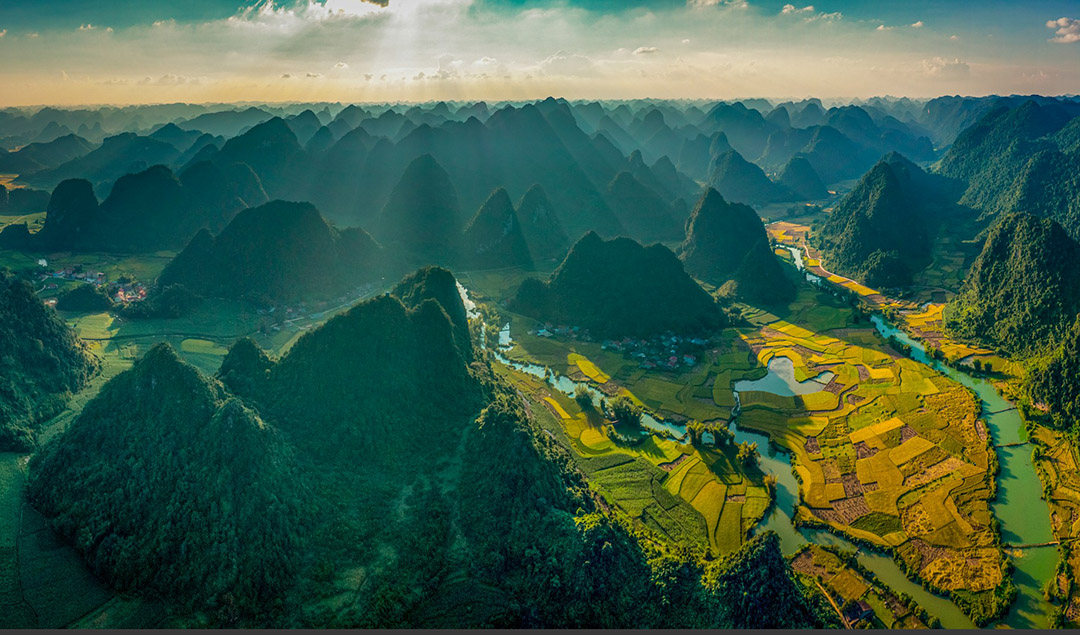
Sharing a border with China to the north, Cao Bang is surrounded by Bac Kan, Lang Son, and Tuyen Quang provinces and is known for its mountainous terrain and natural wonders like Ban Gioc Waterfall.
How to get there
Travelers can reach Cao Bang from Hanoi by bus or private car via National Highway 3, covering around 270 kilometers in about 6 to 7 hours. Regular direct buses from Hanoi make the journey convenient despite the remote location.
Highlights
Cao Bang feels like stepping into another era—wild, unspoiled, and peppered with spectacles. Ban Gioc Falls is its star, a massive waterfall straddling the Vietnamese-Chinese border, roaring especially in the wet season. Nguom Ngao Cave stretches for kilometers underground with glittering stalactites. Pac Bo Historical Site offers a glimpse into revolutionary history where Ho Chi Minh strategized by a mountain stream.
Travel Tips:
- Visit Ban Gioc in the rainy months (June–September) for maximum flow but carry rain gear for sudden showers.
- If you come in the dry season (October–April), you’ll enjoy clearer skies for photography.
- Cao Bang pairs well with Ba Be Lake for a circuit. Allow 05–06 days for both.
- Local guesthouses are simple but clean; expect prices from USD 10–20 per night.
>> Read More: 8 Best North Vietnam Provinces Worth Visiting For A Regional Treasures Tour
Cultural & Rural Retreats: Authentic Places to Visit in Northern Vietnam
Mai Chau & Lac Village
Mai Chau is a peaceful mountainous district in old Hoa Binh, now Phu Tho Province, located about 140 kilometers southwest of Hanoi in northern Vietnam. Nestled in a lush green valley surrounded by forested hills, Mai Chau is famous for its tranquil rice paddies, traditional stilt houses, and rich cultural heritage, especially in ethnic minority villages like Lac Village.
How to get there
To get to Mai Chau, travelers typically take a 3- to 4-hour drive from Hanoi by car, bus, or private transfer. While there is no direct train service, local buses run regularly from Hanoi to Mai Chau town, providing easy access for day trips or longer stays.
Highlights
Mai Chau is tranquil rather than dramatic—rice paddies and small rivers hemmed by hills where the White Thai ethnic community lives. You can cycle across flat paths, admire bamboo weaving, and end the evening watching cultural dance shows in communal stilt houses.
Travel Tips:
- Overnight homestays cost around USD 15–25 per person with meals included.
- The valley is best during harvest months—May and September—for golden paddies.
- It’s also less chilly than Sapa, so families with children often find it comfortable.
>> See Tour: Vietnam – The Northwest Loop
Bac Ha Market
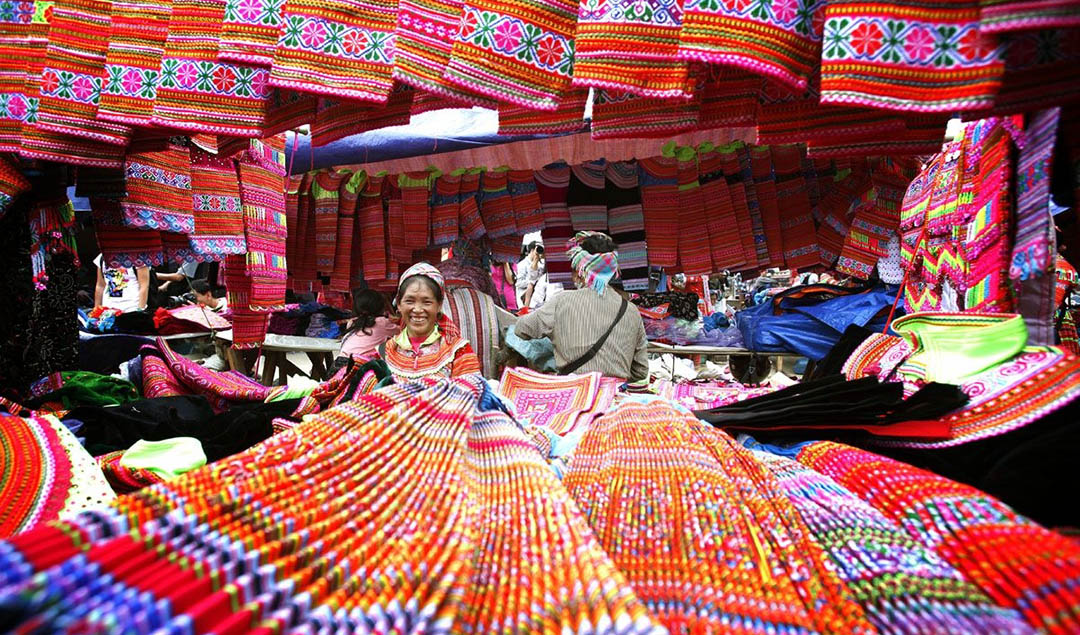
Bac Ha Village is located in Lao Cai Province, about 70 kilometers northeast of Sa Pa and roughly 300 kilometers from Hanoi in northwest Vietnam. Nestled among rugged mountains, it is renowned for its vibrant ethnic minority cultures, including the Flower Hmong people, and the famous Bac Ha Sunday market.
How to get there
Travelers typically get to Bac Ha by first reaching Sapa via an overnight train or bus from Hanoi, then continuing by bus or car for around 3 to 4 hours on mountainous roads. This route offers a scenic extension to the northern Vietnam highlands beyond Sapa.
>> Read More: Discover Ha Giang & The Far North
Highlights
More than just a market, Bac Ha on Sundays brings together dozens of ethnic minority groups who trade not only goods but also news and community connections. Rows of vividly dressed Flower Hmong women sell hand-embroidered skirts, livestock pens echo with spirited bargaining, and steaming pots of local corn wine invite strangers to become friends.
Travel Tips:
- Arrive by 07:00 to see the market before big bus tours.
- Don’t bargain aggressively—small discounts are fine, but remember many families rely on sales here.
- Photography should be respectful—ask before shooting portraits.
Ba Be National Park (Ba Be Lake)
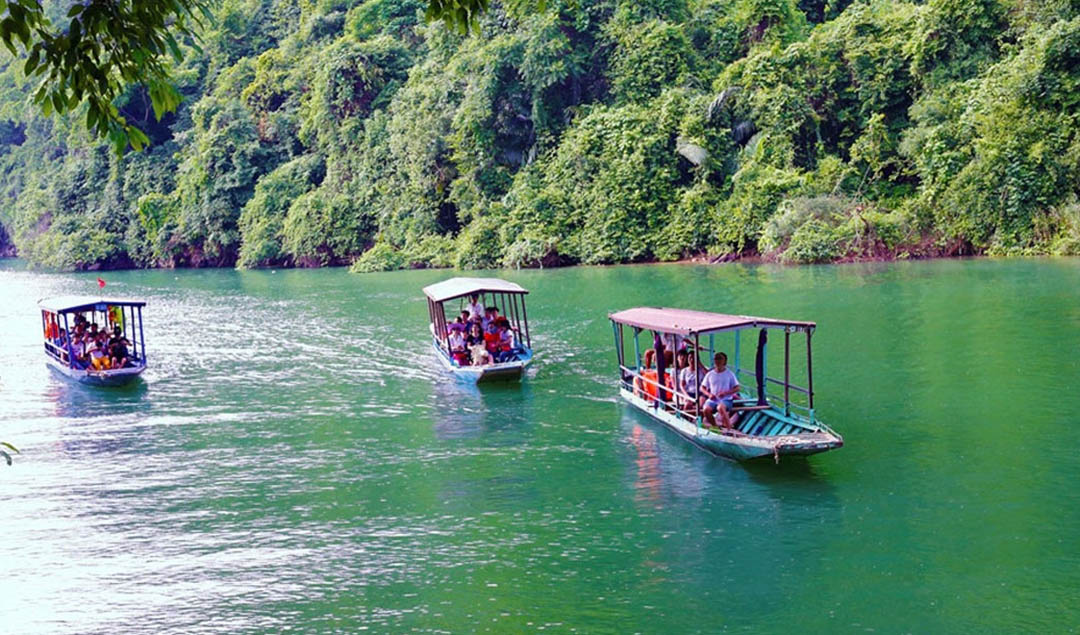
Located in Thai Nguyen Province in northern Vietnam, Ba Be National Park about 240 kilometers north of Hanoi. The park is famous for its large freshwater lake, surrounded by limestone mountains, dense forests, and diverse wildlife. Ba Be offers a serene natural retreat with opportunities for boating, trekking, and exploring ethnic minority villages in a peaceful setting.
>> Read More: Top 13 Vietnam National Parks to Visit for Nature Lovers
How to get there
Travelers can take a 5 to 6-hour bus or private car ride from Hanoi. Buses depart from My Dinh or Gia Lam stations, often requiring a transfer in Bac Kan city, followed by a short ride to the park itself. Private transfers offer a faster, more comfortable option.
Highlights
Ba Be—literally “Three Lakes”—is surrounded by jungle, caves, and waterfalls. Kayaking along glassy waters at sunrise immerses you in birdsong. Hiking trails lead into primary forests, waterfall cascades, and mysterious caves like Hua Ma. Homestays in Tay stilt houses offer warm meals, herbal teas, and a view right across the lake.
Travel Tips:
- Two nights minimum is ideal—you need time for both the lake and nearby trails.
- Mosquitoes can be thick; repellent and light cover clothing after 18:00 is a must.
- Local guides can be hired for around USD 15–20 per day, ensuring safe forest treks.
Hidden Highland Gems: Offbeat Places to Visit in Northern Vietnam
Moc Chau & Son La Highlands
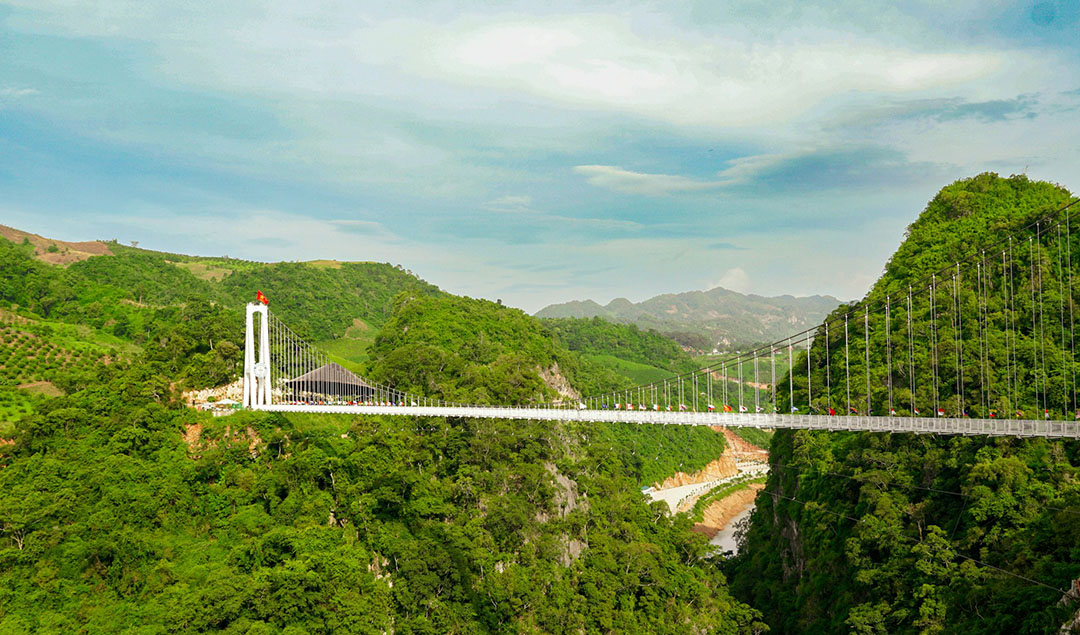
Moc Chau is a picturesque highland district situated in Son La Province, northwest Vietnam, approximately 180 kilometers from Hanoi. Known for its cool climate, expansive grasslands, and lush tea plantations, Moc Chau offers a serene escape with rich ethnic culture and stunning natural landscapes. The region’s elevation of over 1,000 meters ensures mild weather year-round, making it ideal for outdoor activities and cultural exploration.
How to get there
Travelers typically reach Moc Chau by a 6- to 8-hour drive from Hanoi via National Highway 6, with options including private car, bus, or motorbike. This scenic route connects the capital to the northwest highlands, passing through mountainous terrain and small rural communities.
Highlights
Moc Chau is famous for its rolling tea hills and dairy farms. But travelers also find vibrant flower seasons: plum blossoms in February, mustard fields in November, and hydrangeas in April. Trekking to Thac Dai Yem waterfall or exploring Hmong villages offers insight into rural livelihoods still bound to nature’s rhythms.
Travel Tips:
- Nighttime temperatures can drop below 12°C between November–February.
- The plateau is vast—renting a motorbike helps in reaching hidden flower valleys.
- Popular with Vietnamese tourists but still under the international radar, making it an excellent cultural immersion stop.
Lang Son & Mau Son Mountain
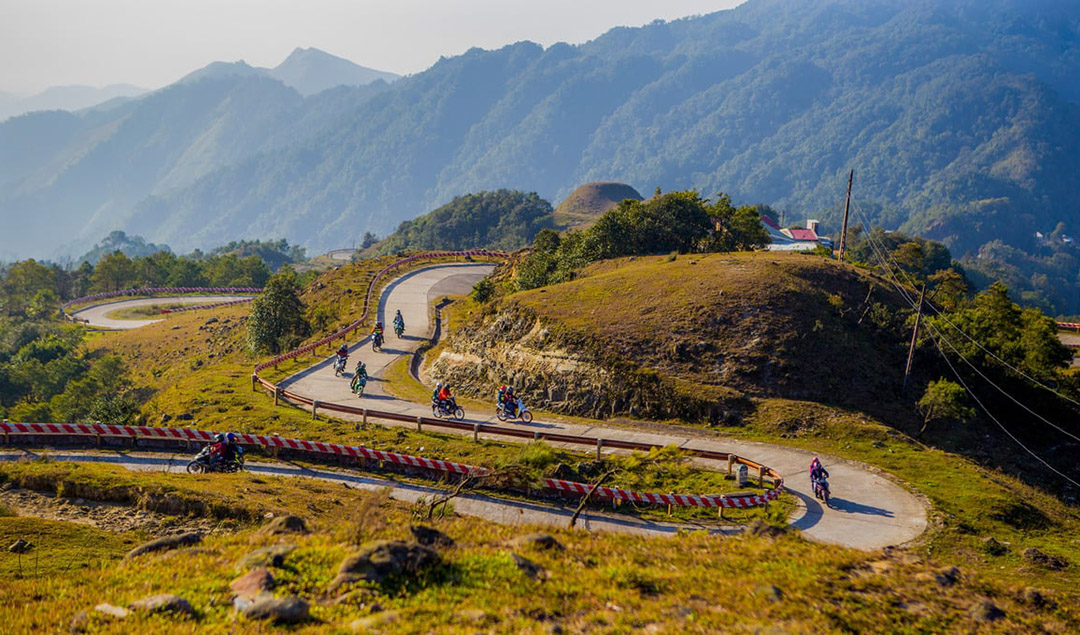
Lang Son is a mountainous province in northeastern Vietnam, located about 154 kilometers from Hanoi and sharing a border with China. The province features rugged terrain, lush valleys, and notable sites such as Mau Son Mountain, which rises to 1,541 meters and sometimes sees winter snowfall. Lang Son City, the provincial capital, sits on the Ky Cung River and serves as a gateway to cultural and natural attractions like Ky Lua Market and historical landmarks.
How to get there
Travelers can reach Lang Son by road or rail from Hanoi in about 3 to 4 hours. Frequent buses and trains connect the two cities, while private cars offer flexible travel options along well-maintained highways.
Highlights
Lang Son thrives as a bustling border trade hub, but nearby Mau Son Mountain is a different world. Rising to 1,500 m, it’s one of the few areas in Vietnam where frost or snow sometimes occurs in deep winter. The mountain once hosted French villas, and their atmospheric ruins remain. Dao communities live in surrounding hamlets, offering herbal teas and traditional customs.
Travel Tips:
- Best visited December–February if “snow hunting” interests you, though flurries are not guaranteed.
- Stay overnight in basic guesthouses to watch sunrises over a literal “sea of clouds.”
- Pair with Cao Bang for an epic mountain road trip.
Planning Essentials & Best Time to Visit
- Seasons: September–December is ideal: clear skies, cooler air, golden terraces. March–April also makes a fine time for blossoms but mornings can be misty. Avoid heavy summer rains (June–August) unless you don’t mind mud and leeches in treks.
- From Hanoi: Transport radiates outwards. Limo buses run to Ninh Binh and Mai Chau. Overnight trains head to Lao Cai for Sapa. Private cars are especially helpful for places like Ban Gioc Falls (Cao Bang) or Ba Be Lake.
- Money & Connectivity: Carry Vietnamese dong in cash, especially for rural markets. SIM cards with generous internet (USD 5–10 for weeks of use) ensure good data coverage.
- Local Etiquette: Always ask before photographing people; dress respectfully in villages—cover shoulders and knees. Gift-giving isn’t necessary, but small purchases directly support local families.
Final Words
From the misty mountains of Sapa to the emerald waters of Halong Bay and the quiet charm of hidden villages, Northern Vietnam is a region that never stops surprising travelers. Whether you’re chasing epic landscapes, cultural encounters, or off-the-beaten-path adventures, every corner has a story waiting to be discovered.
To make the most of your journey, why not travel with a local expert by your side? At Asia Pioneer Travel, we design personalized itineraries that let you experience Northern Vietnam your way—seamlessly, comfortably, and full of unforgettable moments. Ready to explore these scenic wonders and hidden gems? Reach out to Asia Pioneer Travel today, and let us craft your dream trip to Vietnam.
